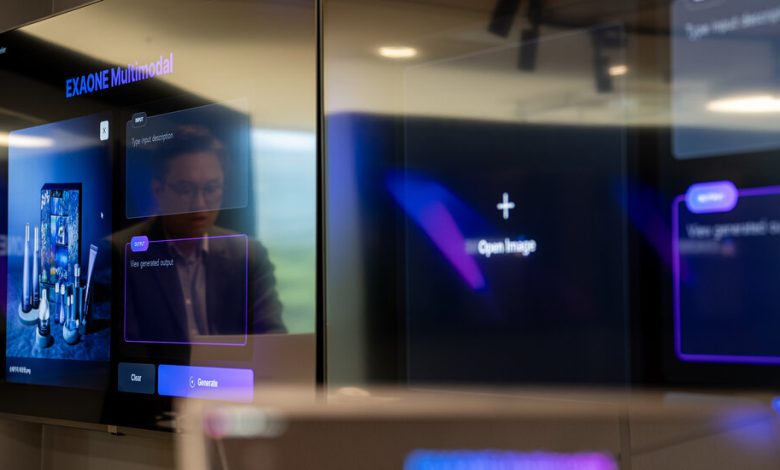Seeking a Big Edge in A.I., South Korean Firms Think Smaller

ChatGPT, Bard, Claude. The world’s most popular and successful chatbots are trained on data scraped from vast swaths of the internet, mirroring the cultural and linguistic dominance of the English language and Western perspectives. This has raised alarms about the lack of diversity in artificial intelligence. There is also the worry that the technology will remain the province of a handful of American companies.
In South Korea, a technological powerhouse, firms are taking advantage of the technology’s malleability to shape A.I. systems from the ground up to address local needs. Some have trained A.I. models with sets of data rich in Korean language and culture. South Korean companies say they’re building A.I. for Thai, Vietnamese and Malaysian audiences. Others are eyeing customers in Brazil, Saudi Arabia and the Philippines, and in industries like medicine and pharmacy.
This has fueled hopes that A.I. can become more diverse, work in more languages, be customized to more cultures and be developed by more countries.
“The more competition is out there, the more systems are going to be robust: socially acceptable, safer, more ethical,” said Byong-Tak Zhang, a computer science professor at Seoul National University.
While there are some prominent non-American A.I. companies, like France’s Mistral, the recent upheaval at OpenAI, the maker of ChatGPT, has highlighted how concentrated the industry remains.
The emerging A.I. landscape in South Korea is one of the most competitive and diverse in the world, said Yong Lim, a professor of law at Seoul National University who leads its AI Policy Initiative. The country’s export-driven economy has encouraged new ventures to seek ways to tailor A.I. systems to specific companies or countries.
South Korea is well positioned to build A.I. technology, developers say, given it has one of the world’s most wired populations to generate vast amounts of data to train A.I. systems. Its tech giants have the resources to invest heavily in research. The government has also been encouraging: It has provided companies with money and data that could be used to train large language models, the technology that powers A.I. chatbots.

Commuters entering the Gangnam metro underground train station in Seoul.Credit…Anthony Wallace/Agence France-Presse — Getty Images
Few other countries have the combination of capital and technology required to develop a large language model that can power a chatbot, experts say. They estimate that it costs $100 million to $200 million to build a foundational model, the technology that serves as the basis for A.I. chatbots.
South Korea is still months behind the United States in the A.I. race and may never fully catch up, as the leading chatbots continue to improve with more resources and data.
But South Korean companies believe they can compete. Instead of going after the global market like their American competitors, companies like Naver and LG have tried to target their A.I. models to specific industries, cultures or languages instead of pulling from the entire internet.
“The localized strategy is a reasonable strategy for them,” said Sukwoong Choi, a professor of information systems at the University at Albany. “U.S. firms are focused on general-purpose tools. South Korean A.I. firms can target a specific area.”
Outside the United States, A.I. prowess appears limited in reach. In China, Baidu’s answer to ChatGPT, called Ernie, and Huawei’s large language model have shown some success at home, but they are far from dominating the global market. Governments and companies in other nations like Canada, Britain, India and Israel have also said they are developing their own A.I. systems, though none has yet to release a system that can be used by the public.
About a year before ChatGPT was released, Naver, which operates South Korea’s most widely used search engine, announced that it had successfully created a large language model. But the chatbot based on that model, Clova X, was released only this September, nearly a year after ChatGPT’s debut.
Nako Sung, an executive at Naver who has led the company’s generative A.I. project, said the timing of ChatGPT’s release surprised him.
“Up until that point, we were taking a conservative approach to A.I. services and just cautiously exploring the possibilities,” Mr. Sung said. “Then we realized that the timeline had been accelerated a lot,” he added. “We decided we had to move immediately.”
Now, Naver runs an A.I. model built for Korean language speakers from the ground up using data from the South Korean government and from its search engine, which has scraped the country’s internet since 1999.
Clova X recognizes Korean idioms and the latest slang — language that American-made chatbots like Bard, ChatGPT and Claude often struggle to understand. Naver’s chatbot is also integrated into the search engine, letting people use the tool to shop and travel.
Outside its home market, the company is exploring business opportunities with the Saudi Arabian government. Japan could be another potential customer, experts said, since Line, a messaging service owned by Naver, is used widely there.
LG has also created its own generative A.I. model, the type of artificial intelligence capable of creating original content based on inputs, called Exaone. Since its creation in 2021, LG has worked with publishers, research centers, pharmaceutical firms and medical companies to tailor its system to their data sets and provide them access to its A.I. system.
The company is targeting businesses and researchers instead of the general user, said Kyunghoon Bae, the director of LG A.I. Research. Its subsidiaries have also begun using its own A.I. chatbots. One of the chatbots, built to analyze chemistry research and chemical equations, has been used by researchers building new materials for batteries, chemicals and medicine.
“Rather than letting the best one or two A.I. systems dominate, it’s important to have an array of models specific to a domain, language or culture,” said Honglak Lee, the chief scientist of LG’s A.I. research arm.
Another South Korean behemoth, Samsung, last month announced Samsung Gauss, a generative A.I. model being used internally to compose emails, summarize documents and translate text. The company plans to integrate it into its mobile phones and smart home appliances.
Other major companies have also said they are developing their own large language models, making South Korea one of the few countries with so many companies building A.I. systems. KT, a South Korean telecommunications firm, has said it is working with a Thai counterpart, Jasmine Group, on a large language model specialized in the Thai language. Kakao, which makes an eponymous super app for chats, has said it is developing generative A.I. for Korean, English, Japanese, Vietnamese and Malaysian.
Still, the United States’ dominance in A.I. appears secure for now. It remains to be seen how closely countries can catch up.
“The market is convulsing; it’s very difficult to predict what’s going to happen,” said Mr. Lim, the A.I. policy expert. “It’s the Wild West, in a sense.”





